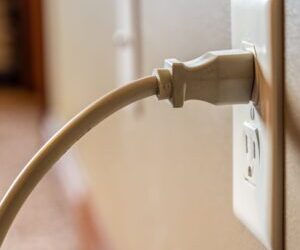A fireplace is a wonderful home feature to have during the colder months. The beauty and warmth that comes from a natural log burning fireplace can bring the whole family together on cold nights.
To get the best out of your fireplace, you’ll need to keep it well maintained. Traditional fireplaces require cleaning before every season, and after every 40 – 50 fires. Removing soot, debris, and creosote will ensure a safe fire throughout the colder months.
Learn the cleaning steps you can perform at home and know when to call in the professionals for comprehensive fireplace maintenance.
Sweep the Interior of Your Fireplace
Thorough cleaning is key to an efficient and safe fireplace. The warmer months are the best time to give your fireplace a full clean in preparation for the winter. Remove all ashes and other debris from your fireplace using a brush and ash pail. A small amount of ash can help you to maintain a burning fire, but you don’t want to be leaving particles around during the off-season.
Despite some advice columns and recommendations, you should avoid cleaning the interior of your fireplace with a household vacuum. Most vacuum cleaners, including high-quality home or commercial cleaners, do not have the filtration systems to remove microscopic ash dust. Dust can exit the vacuum cleaner and enter the air of your home, causing respiratory distress. Fireplace ash is carcinogenic, and exposure can cause long-term health problems.
Purpose-built ash vacuums have specialized filtration, are affordable, and can be purchased from local hardware and appliance stores.
Perform a Visual Inspection and Clean Your Chimney
You’ll need the right equipment for this task. A stable ladder (or other form of roof access) is necessary. Particle masks must be worn whenever inspecting your chimney.
- Sweep or vacuum the interior of your fireplace first.
- Lay a drop cloth within the fireplace.
- Activate the damper control and ensure that it is opening as expected. You can visually inspect the damper from within the fireplace interior.
- If the damper is functioning as expected, you can now inspect your chimney from above.
- Safely access your roof and chimney and remove your chimney cap.
- Visually inspect the chimney lining. Look for ashy debris, flakes, or tar-like creosote buildup (more on cleaning this in the next section.)
- Use your chimney brush to clean debris and stage one or two creosote.
- Open the damper (or have somebody do this) to release any small debris. Most dampers will prevent large debris from falling through.
- Lower an ash vacuum extension pipe into the chimney to remove loose debris from inside.
If you are unable to perform any of these steps due to a lack of equipment, or safety concerns, then call a chimney cleaning specialist in the first instance.
Inspect Your Fireplace Regularly for Creosote
Creosote is a byproduct of your wood burning fire. If the layer of creosote in your chimney is unusually thick, then this could lead to a chimney fire, which could potentially cause fires adjacent to your chimney structure.
Keeping your chimney free of creosote is an essential fireplace cleaning and maintenance step.
Creosote has an appearance ranging from light and fluffy soot, to thick tar. You will be able to see creosote on the inside of your chimney by inspecting the passage visually with a torch. All stages are immediately noticeable if you know what to look for.
- The first stage of creosote buildup can be cleaned effectively with a chimney brush. This creosote will be mostly soot and can be dislodged easily, and then removed manually from your fireplace interior. With a chimney brush and extender pole, you could perform this cleaning as a DIY project. Just make sure you have safe access to your roof and chimney.
- Second stage creosote buildup is a little harder to clean, but a quality round wire brush should get the job done with some effort. This creosote will appear as a brittle flakey substance that can be dislodged with some force. If you are removing second stage creosote yourself, be sure to inspect the chimney after each cleaning pass to check that any buildup has been cleared.
- Third stage creosote buildup will typically need professional attention. This is the most dangerous type of buildup and poses a serious fire hazard. It will appear as a thick substance that is tar-like in appearance. It may even be leaking down the sides of your chimney lining. This is a highly concentrated fuel and your fire should not be operated when third stage creosote is identified. Call a local Iowa chimney cleaning service to remove this thick, sludgy buildup.
Use a Chimney Sweep Log to Maintain Your Fireplace
Some commercial products can help to remove light creosote buildup without the need for a complete chimney sweep. Using a creosote sweeping log before the colder months to help to prevent future deposits.
Keep in mind that a sweeping log doesn’t provide in depth cleaning while it’s burning. It simply deposits chemicals on the lining of your fireplace and chimney to help break down or prevent creosote. If your chimney has significant buildup (more than ¼ inch) then a chimney sweep log will be ineffective. In this case, follow the cleaning instructions in the previous sections.
Have a Certified Sweep Examine Your Fireplace and Chimney Every 12 Months
The bulk of your fireplace maintenance and cleaning can be performed without any outside help. However, for your safety and peace of mind, an annual inspection from a professional is recommended.
A professional can spot problems and potential points of danger that you might miss. They can also perform advanced maintenance on chimneys, dampers, and other features. A professional sweep will provide in-depth chimney cleaning using specialized tools, reducing soot and creosote that could cause an uncontrolled fire in your chimney.
Chimney sweeps can also identify damage that you might not be able to see, including damage to your chimney structure, fireplace interior, or chimney liner. A chimney cleaning service will be able to make recommendations for any structural work that needs to be done for a safe fire season.
If you’re in doubt with any of these steps, or if you just want complete confidence that your fireplace and chimney are clean and safe, a professional cleaning service is recommended.
Tired of the Maintenance? Consider a Modern Stove or Gas Log Fire
You may have reached this point of the article and realized just how much is involved in keeping your fireplace clean and well-serviced. The beauty of home remodeling and renovations is that you can always make changes that will greatly increase your quality of life.
Traditional log burning fires are perfect for many homes, but if you’re over the aesthetic or simply don’t have the time to keep yours in good shape, then you could opt for a modern alternative.
Gas logs are an option if you want to make use of your existing fireplace but don’t want to deal with all the cleaning and maintenance. Gas logs put out a decent amount of heat, and modern options look just like the real thing. Gas logs are more efficient than an open wood fireplace, and much safer. Gas burns clean and doesn’t leave residue or cause creosote buildup.
Another option would be to have a stove installed. Whether you choose gas, wood, or even pellet burning, a stove can provide primary heat to your home while also offering the relaxing and comforting view of real flames behind an insulated glass panel. Stoves are much more efficient than traditional fireplaces and require much less maintenance.
If you want to explore all your options for fireplace installations, stoves, or other heating features, you can get help from remodeling and renovation experts in Iowa.
Keep Your Home Safer and Cleaner by Maintaining Your Fireplace
Whether you plan to upgrade in the future, or if you’re happy with your current fireplace, cleaning and maintenance is a must. Keeping your fireplace and chimney clean will keep dangerous particles out of the air and will reduce the risk of uncontrolled fire.
Always put the safety of your home and family first. Keep your fireplace well maintained and explore remodeling options if it’s time for something new.



0 Comments